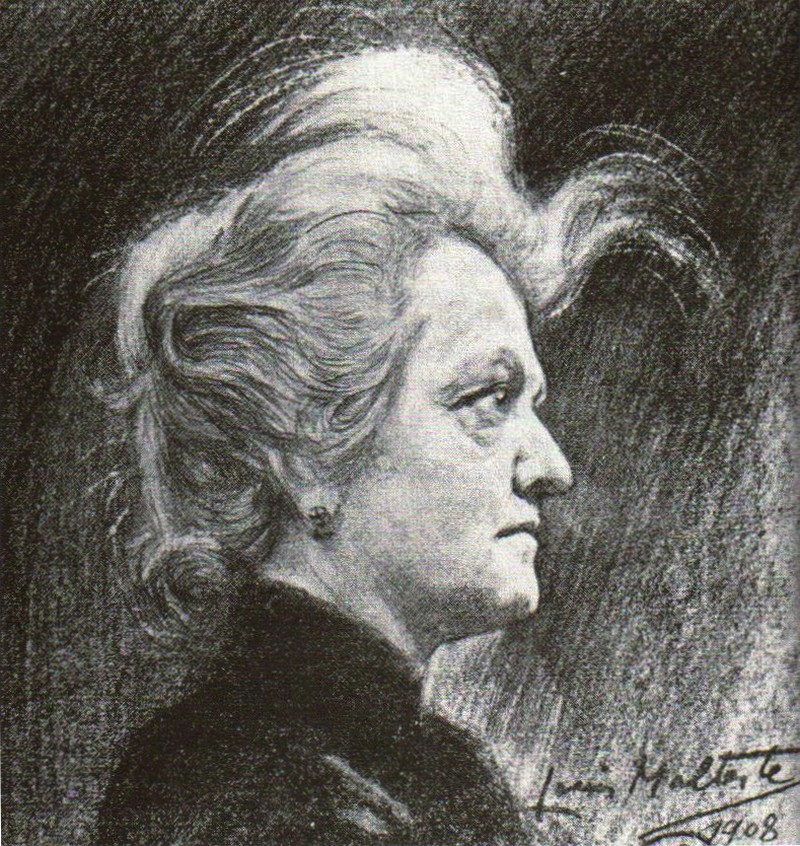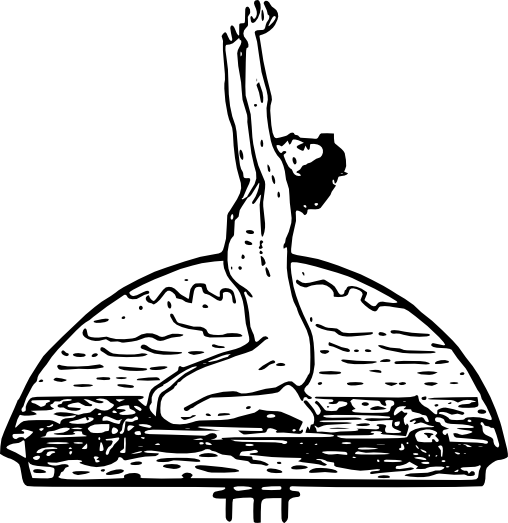The Action of Eusapia Paladino on the Electroscope
By Dr. Imoda

AT the mediumistic seance held with Eusapia Paladino, on the evening of April 10th, 1908, at the house of the engineer, M. F., I experimentally obtained a phenomenon which appears to demonstrate that radiations resembling those of radium and the cathodic rays of Crookes emanated from the medium. The phenomenon consisted in the rapid discharge of an electroscope without contact.
At the end of the seance, and when she was completely aroused from her trance condition, I asked Madame Paladino to stand beside a table on which I had placed a charged electroscope, the dielectric portion of which was made of pure sulphur, so that the insulation might be perfect. I got her to stretch her hands forward to a distance of about four inches from the electrode. Her hands were watched by a friend of mine, so that there was no possibility of her touching the electroscope, whilst I attentively observed every movement of the gold leaves, separated by the charging of the electroscope.
For perhaps two minutes no visible effect was produced, but after that the leaves began to fall together, very slowly, but perceptibly; at length, after three or four minutes more, the gold leaves of the electroscope suddenly came together, showing that the electroscope was discharged.
Since the conditions under which the phenomenon was obtained (the room was lighted by six small oil lamps, with red glasses) precluded the possibility that Eusapia had touched the instrument, it seems to me possible to argue that the discharge was due to the surrounding air having become a conductor of electricity, just as if I had approached to the electroscope a radium salt or a Crookes' bulb. But there was one difference between the action of the radium and that of the medium — viz., that whilst the discharge of the electroscope by the approach of a radium salt produces an instantaneous effect as soon as the radium is brought close to it, in the case of Eusapia the discharge did not take place until after several minutes, as though the body of the medium, previously passive, suddenly projected a jet of these radiations. That is to say, the emission of the mediumistic rays appeared not to be continuous, but by shocks, as, perhaps, is the case with the electrical discharge of the gymnotus and torpedo.
If we compare this phenomenon of the mediumistic discharging of an electroscope with the phenomena [411] already certified by myself and others, such as impressions on photographic plates tightly sealed up in paper or wooden boxes, the hypothesis that radium emanations, cathodic rays, and mediumistic rays are one and the same thing appears to gain in probability.
One other phenomenon, equally well vouched for by myself and others as occurring in mediumistic seances, appears to support this hypothesis — namely, that a small white cloud, floating like a vapour, and resembling a slightly luminous fog, is frequently seen above the surface of the table during seances. In one instance I saw, surrounding the head of Professor Lombroso, a thick cloud of white vapour, the medium having asked us to blow our breath in that direction. We know that one of the properties of the cathodic rays is precisely that of causing the formation of a fog when they pass through a layer of air saturated with moisture.
It would be interesting ascertain whether mediumistic radiations, as well as cathodic rays and the emanations of radium, have the property of rendering phosphorescent a screen of platino-cyanide of barium placed in their track; up to the present I have not had the opportunity of trying this experiment.
The phenomenon of the discharge of the electroscope, taken by itself, would not, for me, be an absolute proof that the surrounding air had become a conductor of electricity, because the phenomenon can be explained in another way.
We have only to suppose that a materialised limb had placed the hand of the medium in direct contact with the instrument, and that this small degree of materialisation, sufficient to discharge the electroscope, but not to make an impression on my retina, had remained invisible to me. We know, in fact, positively, that the lower degrees of materialisation are not visible to the physical eye, while they may be sufficiently powerful to impress a photographic plate, even by reflected light.
But this hypothesis, reasonable in other respects, is contradicted by the two classes of phenomenon mentioned above: The cloud of vapour and the impression on the covered photographic [412] plate. Therefore, the former one seems to me more probable — viz., that the mediumistic radiations are able of themselves to render air a conductor of electricity, and that, in consequence, the radiations of radium, the cathodic radiations of the Crookes' bulb, and the mediumistic radiations, are fundamentally the same.
I would strongly urge experimenters to undertake researches in pursuance of this idea; for if we can definitely establish the identity of all these radiations, one of the mysteries of an obscure and complex problem — that is, the physical nature of mediumistic force — would begin to be cleared up.

Originally published in The Annals of Psychic Science 7:44-5 (1908).
Return to Auric Research index.
